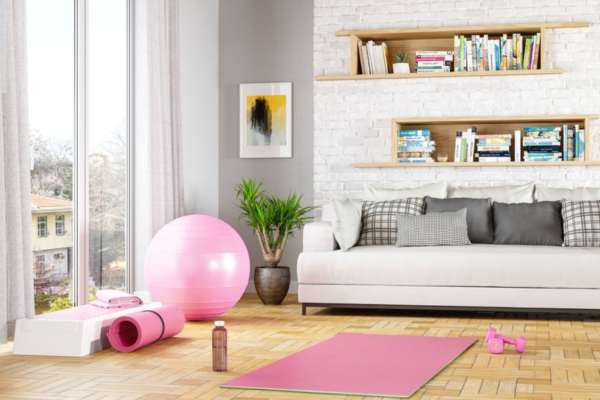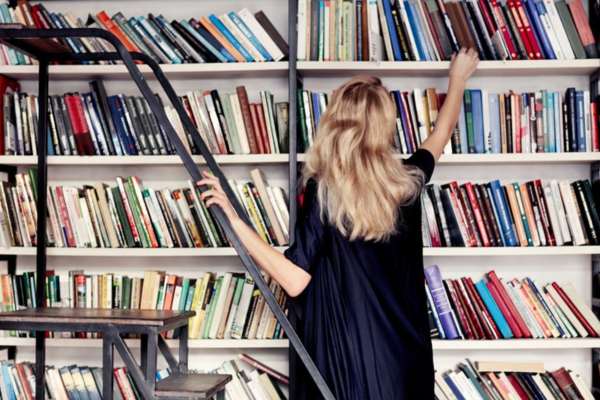Bookshelves are A staple piece of furniture in almost every home. They provide storage, Organization, And A decorative element to any living space. However, Not all bookshelves are created equal. One common question that arises when shopping for A Bookshelf is “How deep is A standard bookshelf?” This seemingly simple query can have various answers depending on the type of bookshelf And Its intended use. Knowing the depth of A standard bookshelf is essential when determining. If It will fit in your desired location And accommodate the items you plan to store on It. In this Article, We will explore the different types of Bookshelves And their standard dimensions so that. You can make an informed decision when selecting the perfect one for your home or office.
What Is The Standard Bookshelf?

A standard bookshelf refers to A freestanding piece of furniture designed to hold books And other items. While there isn’t A definitive universal standard size. Most bookshelves have dimensions that fall within A certain range to accommodate typical book sizes. They’re commonly around 24-96 inches high, 24-36 inches wide, And 10-14 inches deep. Standard bookshelves often contain several shelves (usually 3-6) that can sometimes be adjusted for height to accommodate larger books or items. Despite these general measurements, Bookshelves can come in a multitude of designs, sizes, and styles to suit various décor preferences and spatial needs.
Understanding Standard Bookshelf Dimensions
1. What Is The Average Depth Of A Standard Bookshelf?

On average, the deep of A standard bookshelf ranges from 10 to 12 inches. This dimension is designed to comfortably house most commonly sized books, From hardcovers to paperbacks. Such depth allows the book to sit neatly, With little to no overhang. While smaller depths could limit the size of books you can store. Greater depths might cause smaller books to get lost in space or lead to an unappealing look with books pushed too far back. Hence, the average depth is a balancing act between functionality and aesthetics. Catering to a wide range of book sizes while maintaining an appealing appearance.
2. Factors Influencing Bookshelf Depth

Several factors can influence the depth of a bookshelf. The type of items to be stored plays a significant role – if you plan to store larger, oversized books or other items like decorative pieces or photo frames, a deeper shelf might be more suitable. Space constraints in your room may also dictate the depth. For small rooms, a shallow bookshelf could save space while still serving its purpose. Personal aesthetic preferences also factor in – some prefer the look of deeper shelves for their ability to create a sense of depth and drama. Finally, safety and stability are crucial; deeper shelves tend to be more stable and less prone to tipping over. All these factors should be considered in tandem to determine the ideal depth for your bookshelf.
Choosing The Right Depth For Your Bookshelf
1. Assessing Your Space And Requirements

Begin by evaluating the space where you plan to place your bookshelf. If you have A compact room, A shallow bookshelf, Around 6-8 inches deep, Can save precious space. Larger rooms can accommodate deeper bookshelves. Also, Think about what you plan to store. If your collection is mainly paperbacks and average-sized hardcovers, A standard depth of 10-12 inches would suffice. But if you have larger books or plan to display art pieces, A deeper bookshelf might be necessary.
2. Considerations For Different Types Of Books

The depth can vary greatly depending on the type of books you plan to store. A standard bookshelf is typically around 12 inches deep, but this may not be enough for larger books or specialized editions. Before purchasing A bookshelf, It’s important to consider the types of books you have And how they will fit on the shelves.
For example, If you have A collection of coffee table books with large pages And glossy covers. You may need A deeper shelf to accommodate their size. On the other hand, Paperbacks And small novels can fit comfortably on A shallower shelf. It’s also important to consider how many books you plan to store on each shelf And leave some space for growth in your collection.
3. Matching Depth With Room Aesthetics

Consider how the depth of the bookshelf will fit with your room’s aesthetics. Shallow bookshelves can create A sense of spaciousness, Particularly in smaller rooms, whereas deeper bookshelves can add depth and drama to A larger space. If you have a minimalist aesthetic, A streamlined, Shallow bookshelf may work best. In contrast, traditional or eclectic styles may accommodate deeper, more substantial bookshelves. Consider the depth in relation to other furniture in the room to create A cohesive, harmonious look. By aligning your bookshelf’s depth with your room’s aesthetics. You can ensure that your new piece adds to the overall charm And functionality of your space.
Common Bookshelf Depths In The Market
1. 12-Inch Bookshelves
The 12-inch depth bookshelves are considered the standard in the industry. This site is designed with the average book in mind and can comfortably accommodate most hardcovers And paperbacks. These bookshelves typically allow for A neat presentation, With books sitting flush or slightly recessed. Their compact nature makes them A practical choice for smaller rooms or for spaces where floor area is limited. Moreover, a 12-inch depth usually ensures A good balance between the shelf’s capacity and its footprint. Ensuring the bookshelf doesn’t dominate the space.
2. 16-Inch Bookshelves
The 16-inch depth bookshelves offer more space for larger items. They are particularly useful when you have oversized books, Large binders, or if you want to display decorative pieces alongside your books. This additional depth not only provides more storage but also enhances stability, making the bookshelf less likely to tip over when loaded. Ideal for spaces like living rooms or studies where you might want to showcase more than just books, they make a striking aesthetic statement. However, Given their size, They do require more space And may not be suitable for smaller rooms.
3. 24-Inch Bookshelves
The 24-inch deep standard bookshelf stands out in the market due to its substantial depth. These are particularly beneficial when the items you wish to store or display extend beyond traditional books. Their generous depth easily accommodates larger items, such as oversized books, and vinyl records. Large photo albums, art pieces, or even certain electronics.
These deep shelves make a bold statement, and as such, are often found in large rooms, commercial spaces, or libraries where space is not a limiting factor. In terms of aesthetics, they offer a robust look that can function as a major storage solution or a striking display case. But remember, due to their size, they need substantial room for placement. When considering a 24-inch bookshelf, ensure you have the necessary space to prevent your room from feeling overwhelmed.
4. Customizable Bookshelf Depths
Customizable bookshelf depths have been gaining popularity as they allow for personalization based on individual needs and spatial constraints. Whether you have A unique collection of oversized books Or A small space that necessitates A narrower shelf, Custom bookshelves can cater to these requirements.
Some manufacturers and carpenters offer bespoke options where you can specify the depth, Height, And width, Tailoring the bookshelf to your exact needs. Additionally, Some bookshelves come with adjustable shelves, allowing you to modify the depth as per your changing requirements. Opting for customizable bookshelf depths ensures that you have A piece of furniture that fits seamlessly into your space and perfectly suits your storage needs. Remember, Though, that customizable options may come at a higher cost compared to standard sizes, for many, the added flexibility and fit are worth the investment.
Tips For Optimising Bookshelf Depth
1. Organising Books Efficiently

An efficient organization can optimize even the simplest bookshelf. The depth of your bookshelf can help in creating an orderly arrangement. Organize your books based on their size – put the larger books on the deeper shelves, And the smaller or average-sized books on the shallower ones. This not only ensures A neat look but also makes the books easier to access. For deeper shelves, Consider organizing books in a double row, but be sure the books in the back are not ones you frequently reach for.
2. Using Adjustable Shelves

One of the most practical features of A bookshelf is adjustable shelves. They offer A high degree of flexibility And allow you to customize the depth of your shelves according to your needs. Whether you have oversized art books, a collection of small paperbacks, or A mix of both, adjustable shelves help cater to them all. The shelves can be moved up or down, creating the perfect nook for each type of book or item. Over time, as your collection changes or expands, you can easily readjust the shelves to fit new books or decor pieces. Besides, evenly distributing weight on adjustable shelves enhances the bookshelf’s stability. However, remember to refer to the manufacturer’s guidelines regarding weight capacity to prevent overloading and ensure the longevity of your bookshelf.
3. Utilising The Top Shelf

The top shelf of your bookshelf often presents an untapped opportunity for storage or decor. In the case of deep bookshelves, this space can house larger books or items that don’t fit within the standard shelves. You can also use it to display decorative pieces, artwork, or plants that add a touch of personal style to the room. For standard or shallow bookshelves, the top shelf might serve as an excellent spot for smaller art pieces or picture frames. It’s important to be mindful of the weight And size of the items placed on the top shelf to maintain balance And prevent the risk of the bookshelf tipping over. In A Nutshell, The top shelf can be effectively utilized to enhance storage capacity or contribute to the overall aesthetic appeal of your space.
Are There Any Advantages To Shallower Bookshelves?
Yes, shallower bookshelves do offer several advantages. Firstly, they are great space savers, perfect for small rooms or spaces where floor area is a constraint. They allow for a more open room design, preventing a space from feeling overly cramped. Secondly, a shallower bookshelf provides easy visibility and accessibility to all books, since there’s no hidden or unreachable row. This makes finding and organizing books a more straightforward task. Thirdly, from an aesthetic point of view, shallower bookshelves can lend a more streamlined, minimalist look to a room, aligning well with modern interior decor trends. Lastly, they are often lighter and easier to move, offering flexibility in room layout. However, they may not be suitable for larger books or items, and this must be considered based on individual storage needs.
How Do I Measure The Depth Of A Bookshelf?
Measuring the deep of a standard bookshelf is quite simple and straightforward. Start by clearing the shelf you want to measure to ensure nothing interferes with the measurement. Using A tape measure, Start at the front edge of the shelf, The part closest to you when you’re standing in front of It. Extend the tape measure straight back until you reach the rear edge of the shelf. This straight-line measurement from the front to the back of the shelf is your depth. Keep in mind to measure inside any lips or edging on the shelf. Also, it’s important to remember that the depth of a bookshelf might not be uniform across all shelves. So consider measuring each shelf individually if precision is necessary.
Conclusion
The deep of A standard bookshelf depends on various factors, including the type of books you have And your available space. Generally, the average depth ranges from 10 to 12 inches. You can find bookshelves with different depths depending on your specific needs. It is crucial to measure both your books and available space before purchasing A bookshelf to ensure It meets your requirements. Remember to consider other factors such as materials, Design, And price when making your selection. With this information in mind, You can confidently choose A bookshelf that will meet all your storage needs while adding an elegant touch to your home decor.
